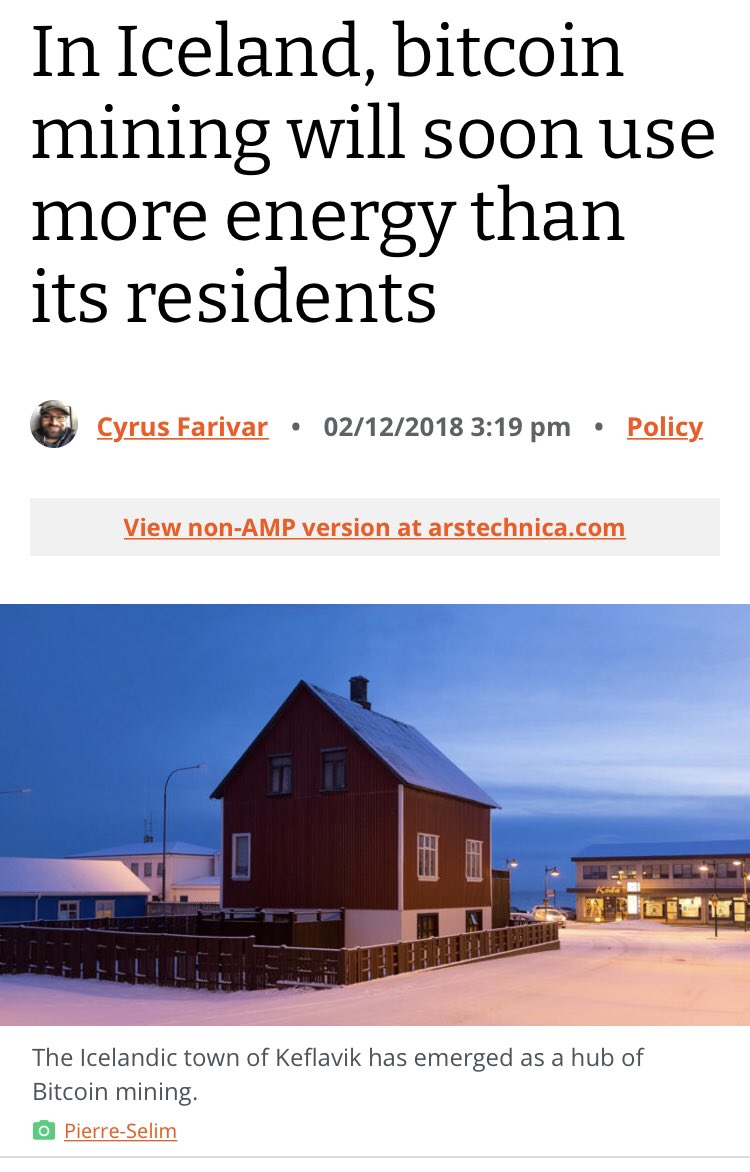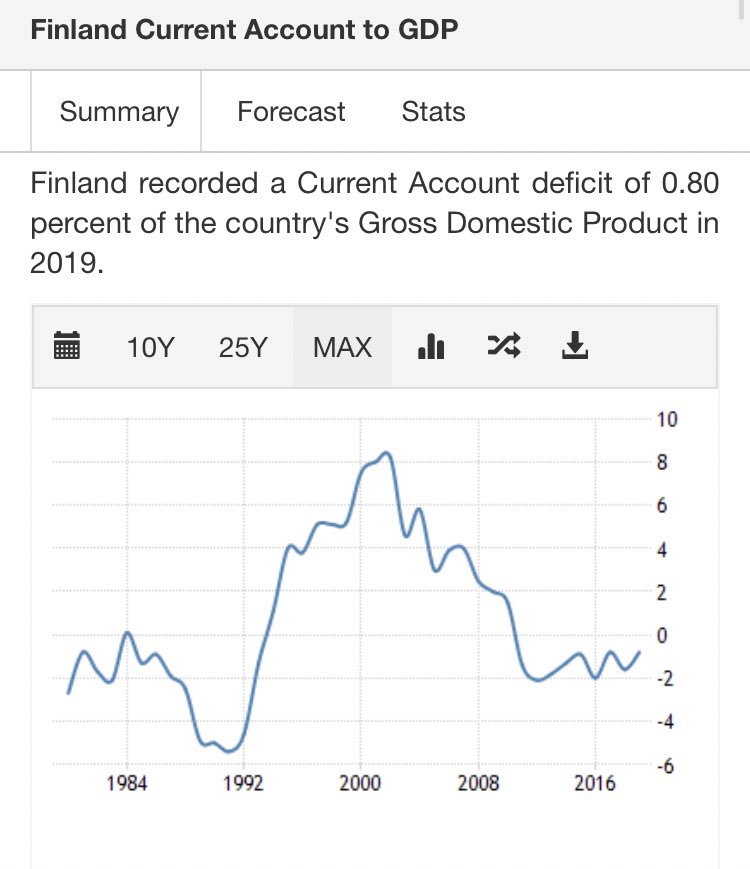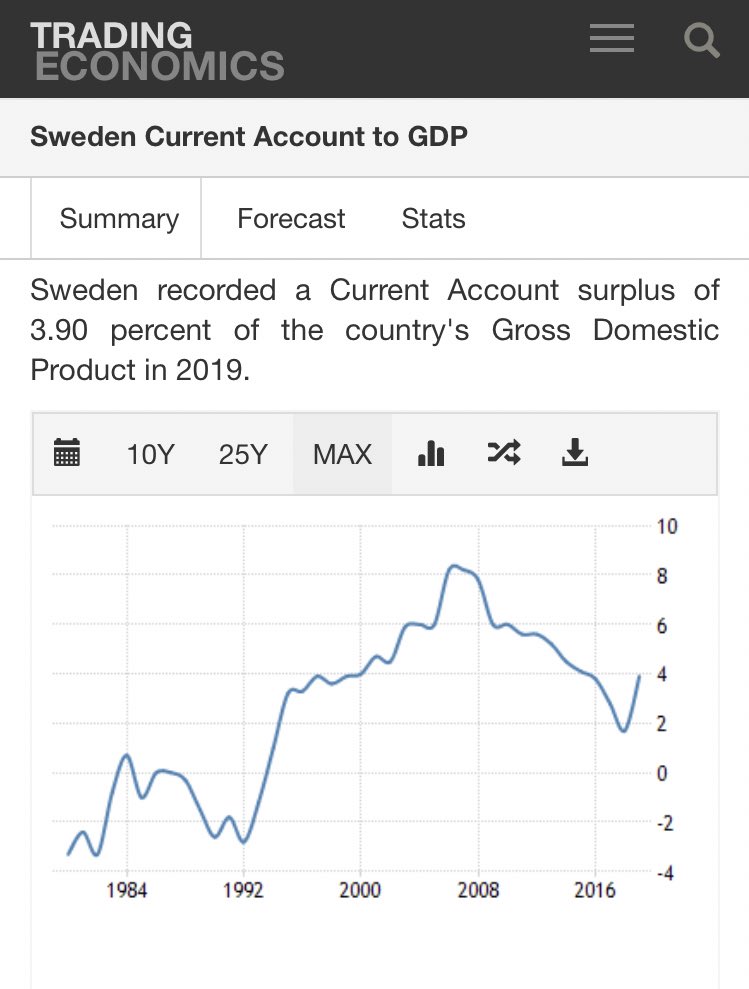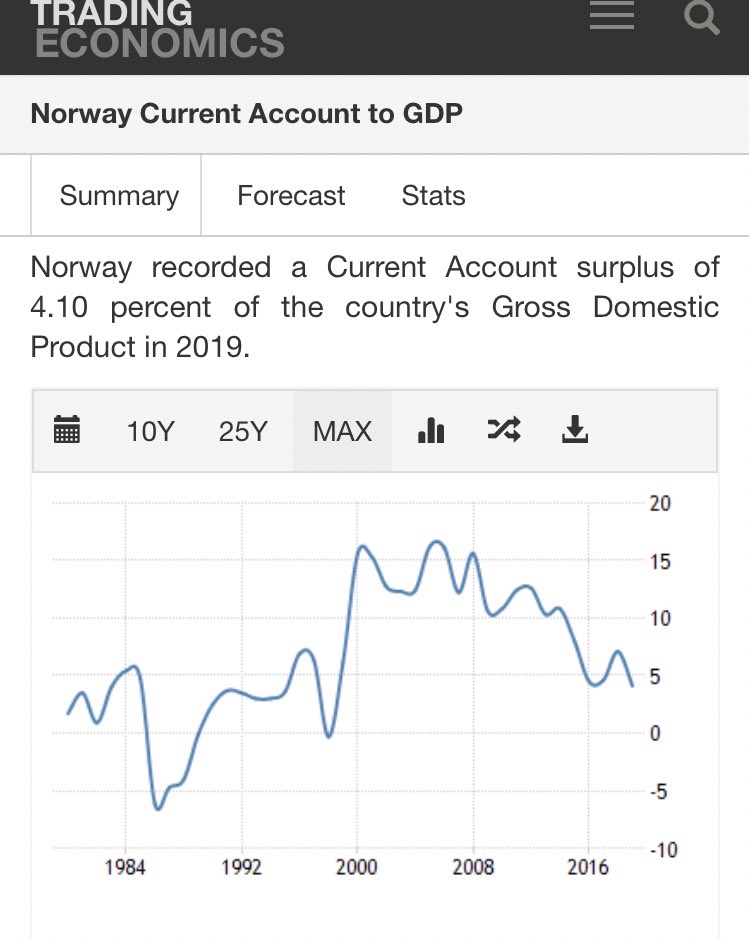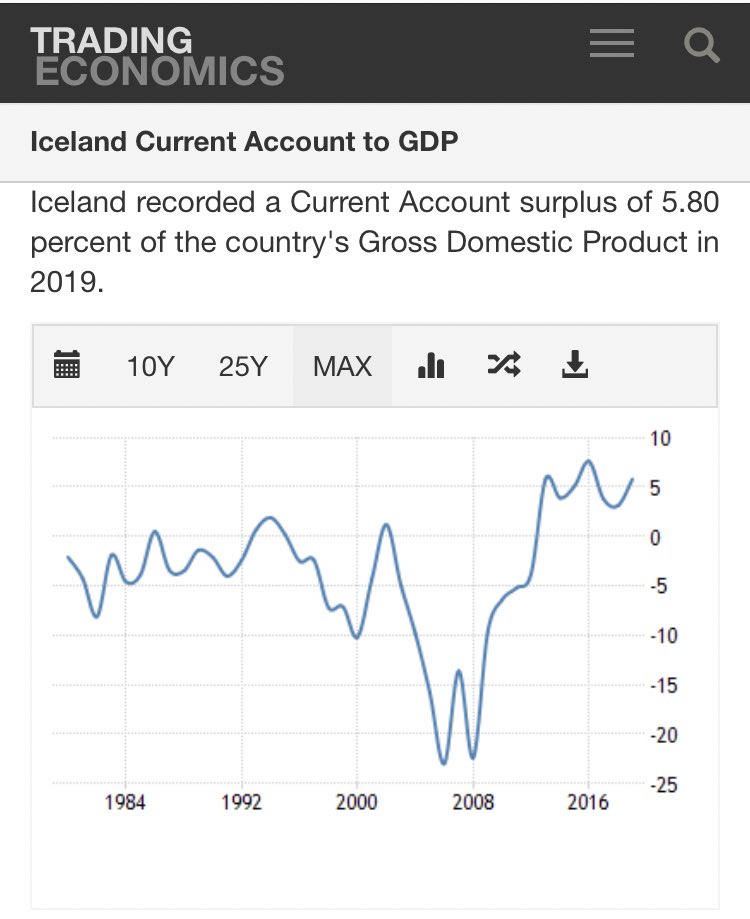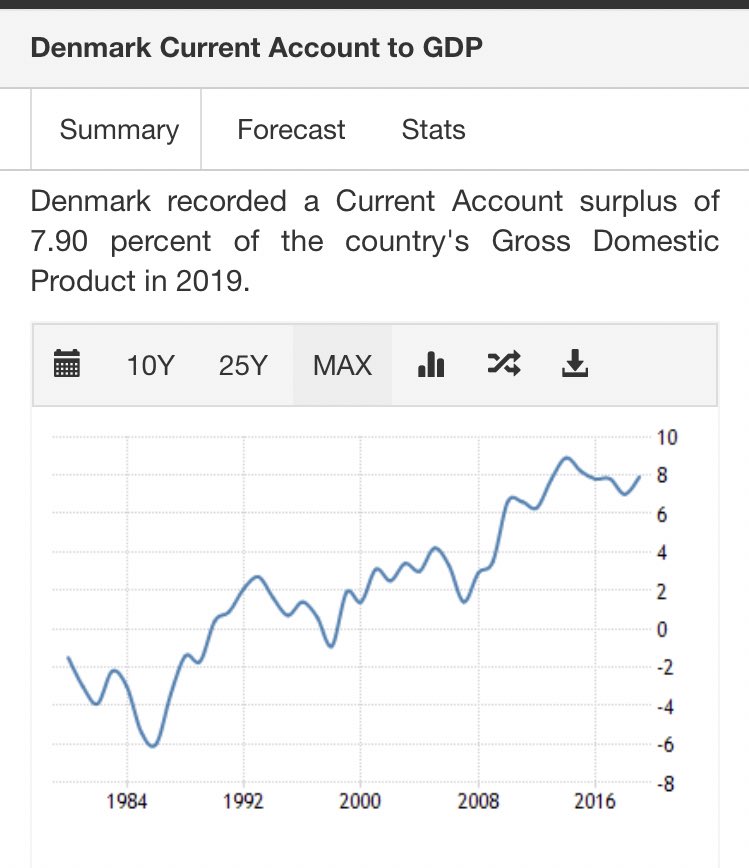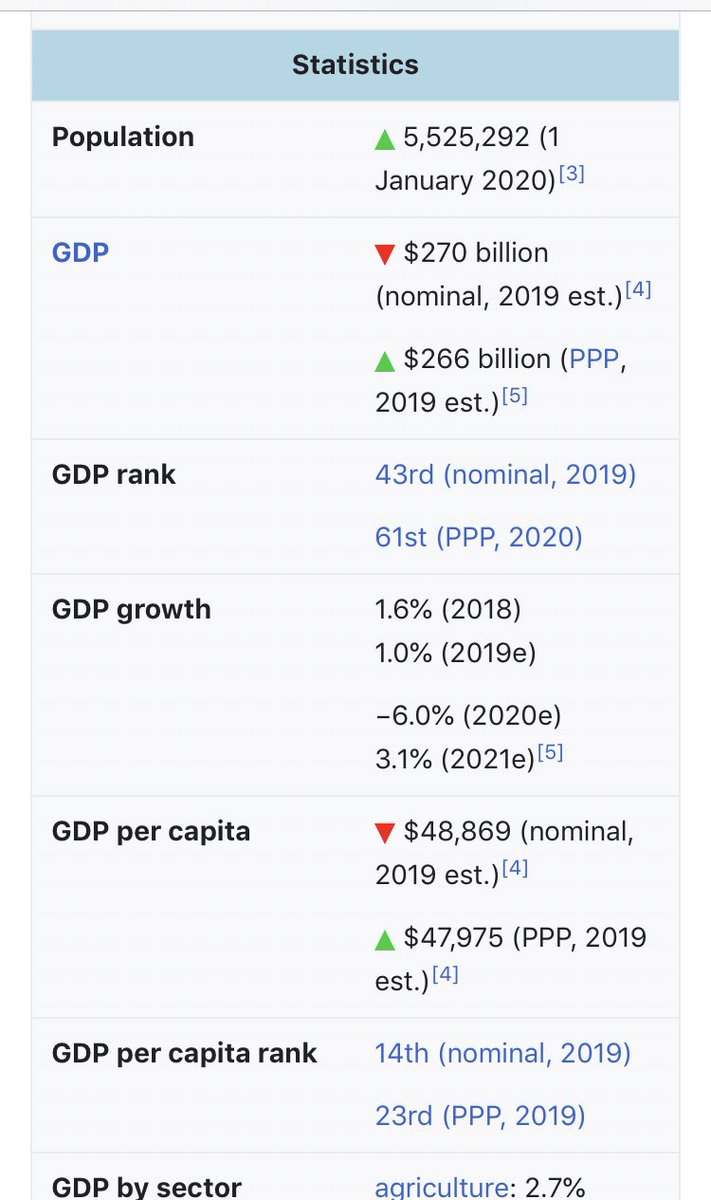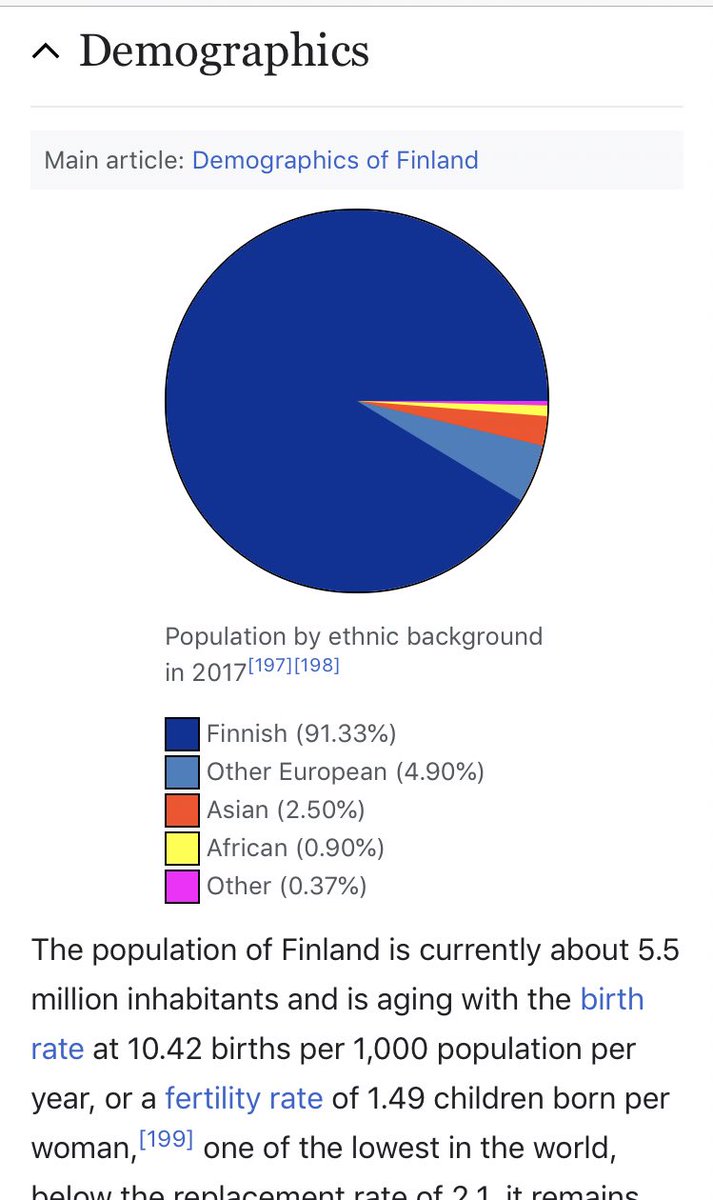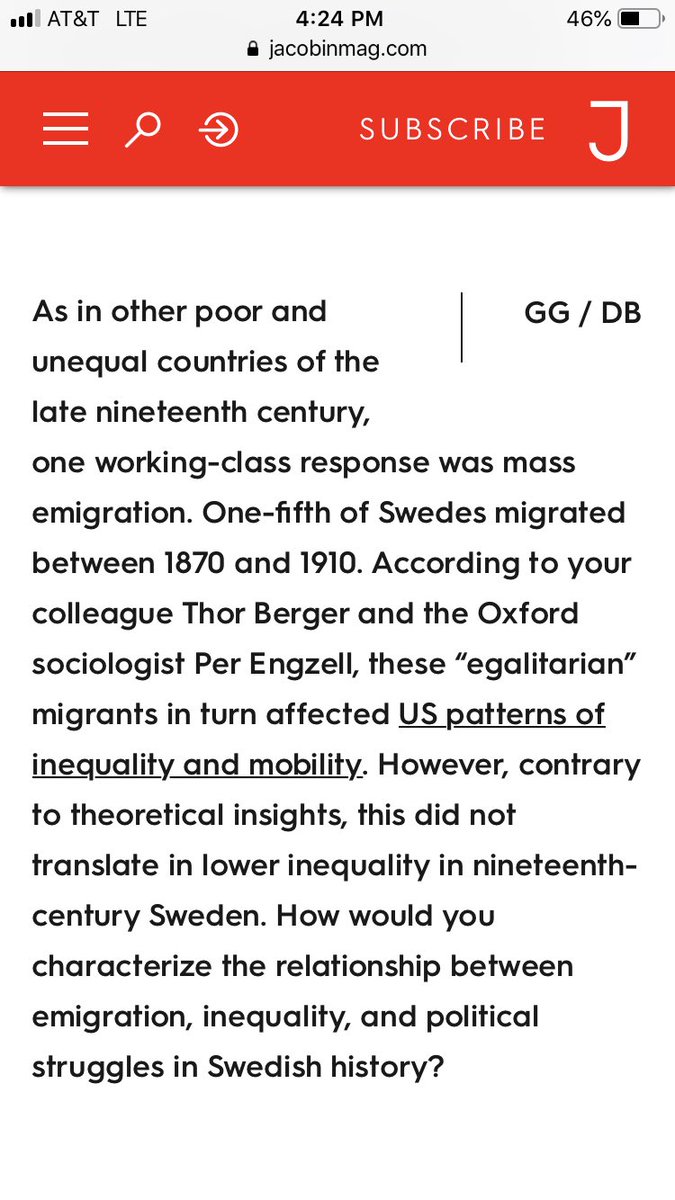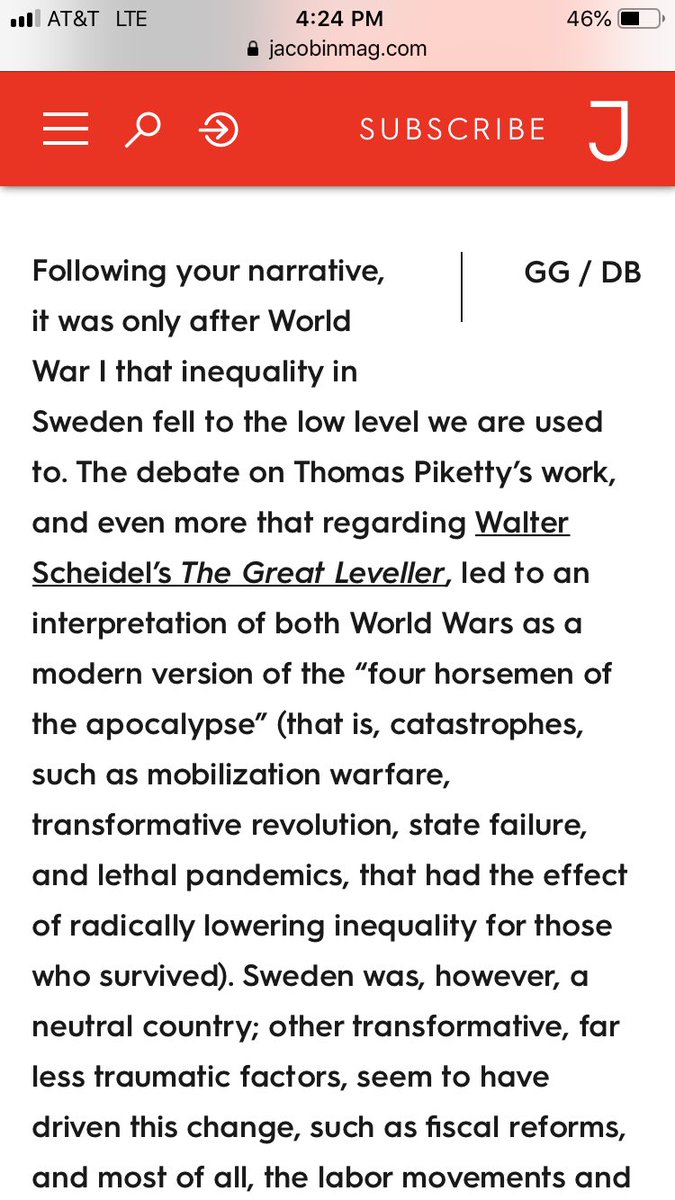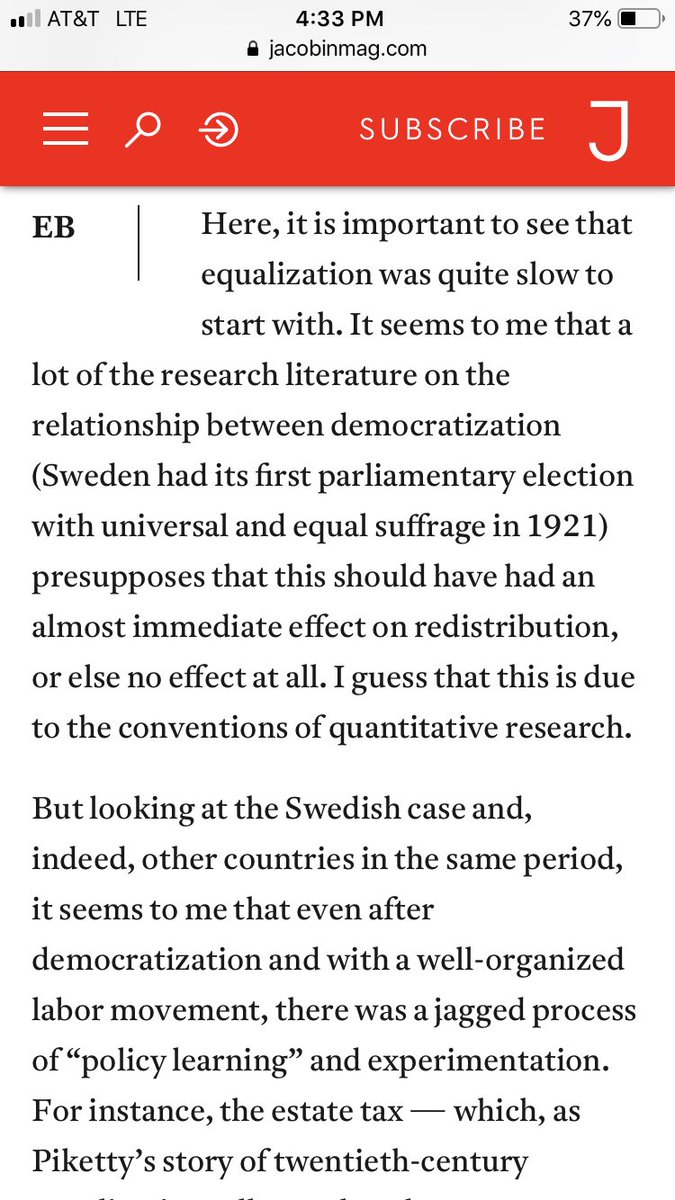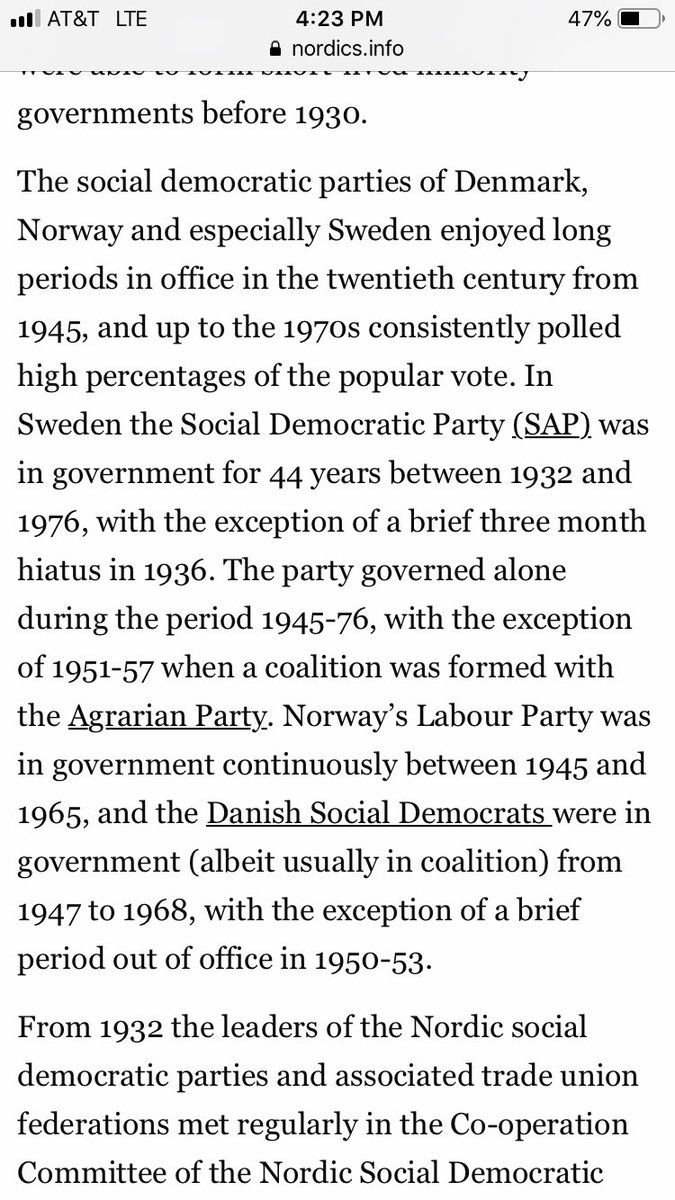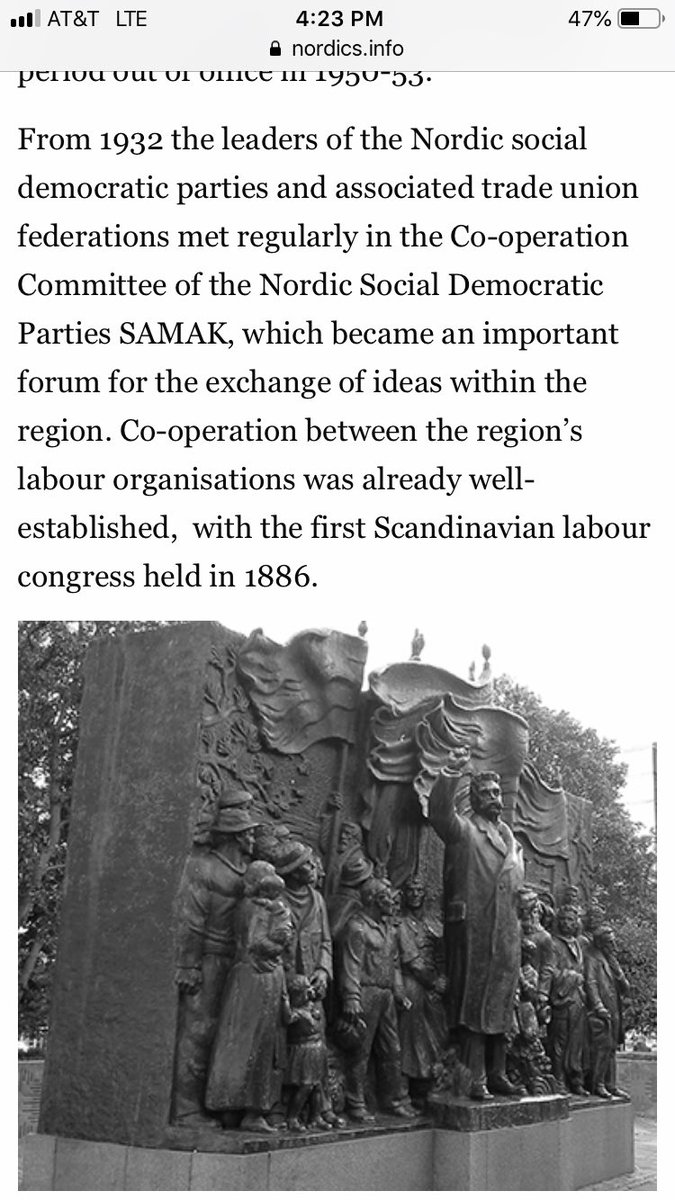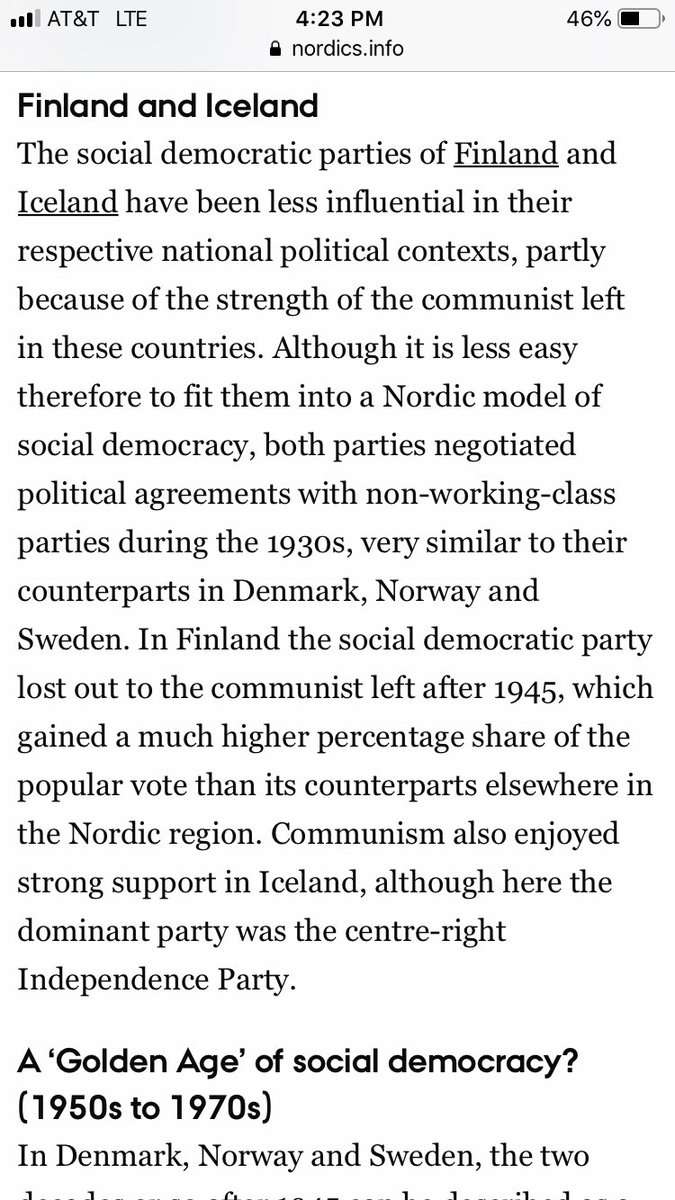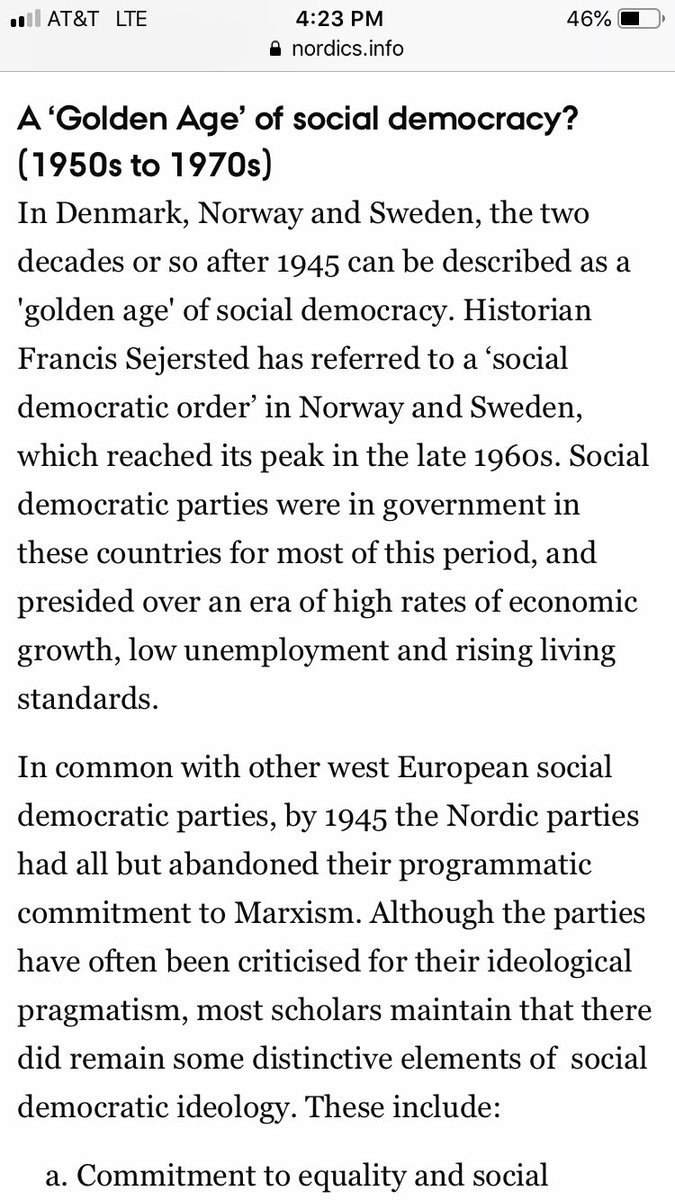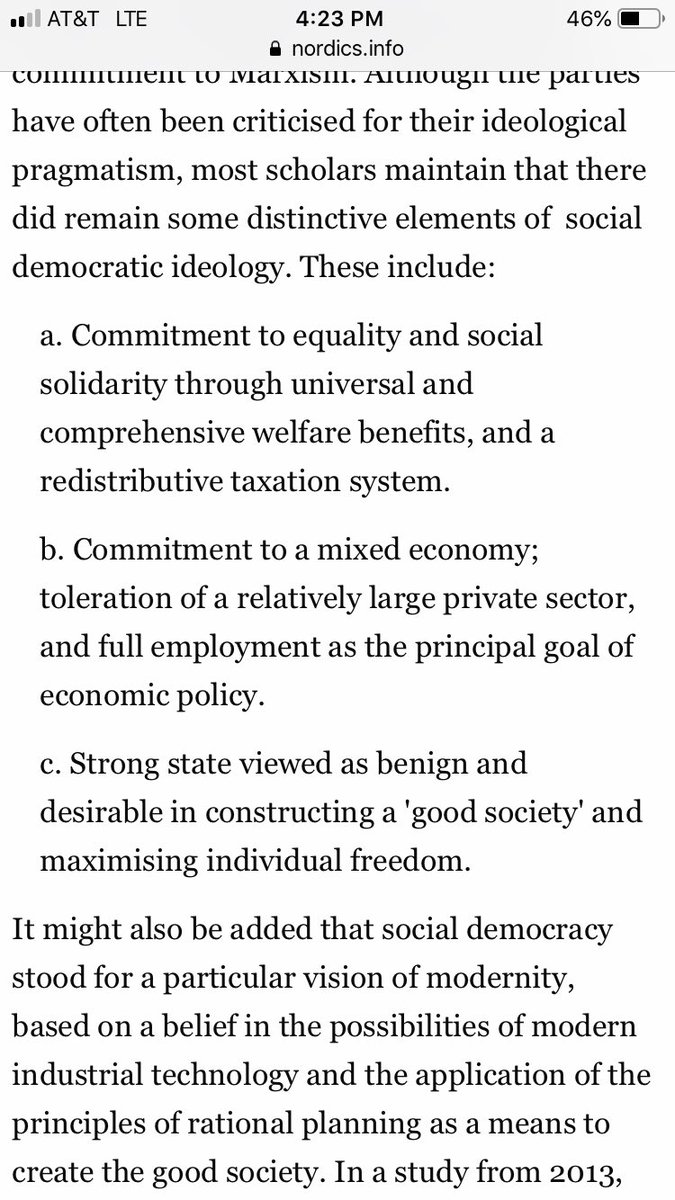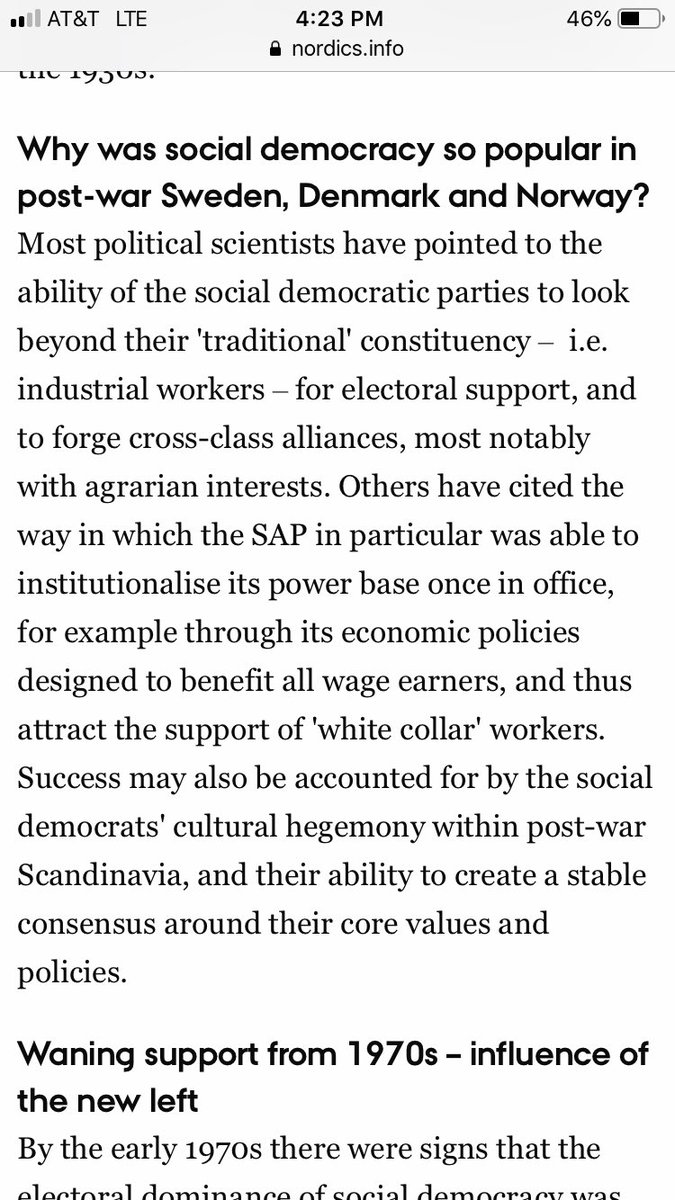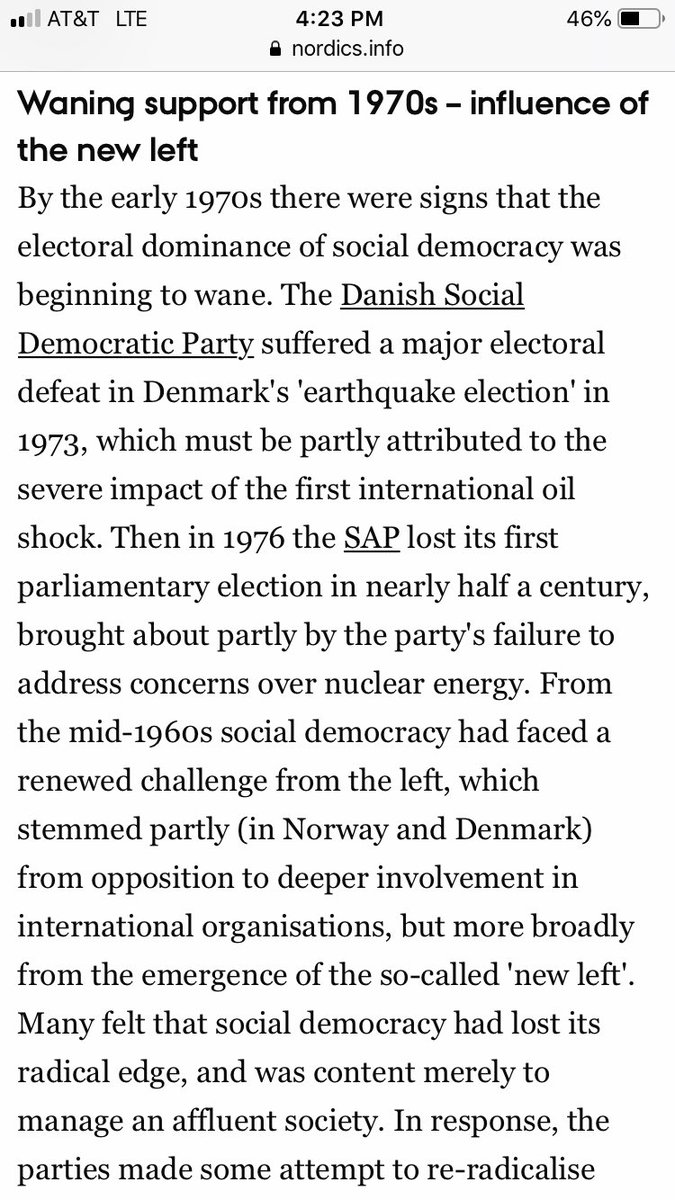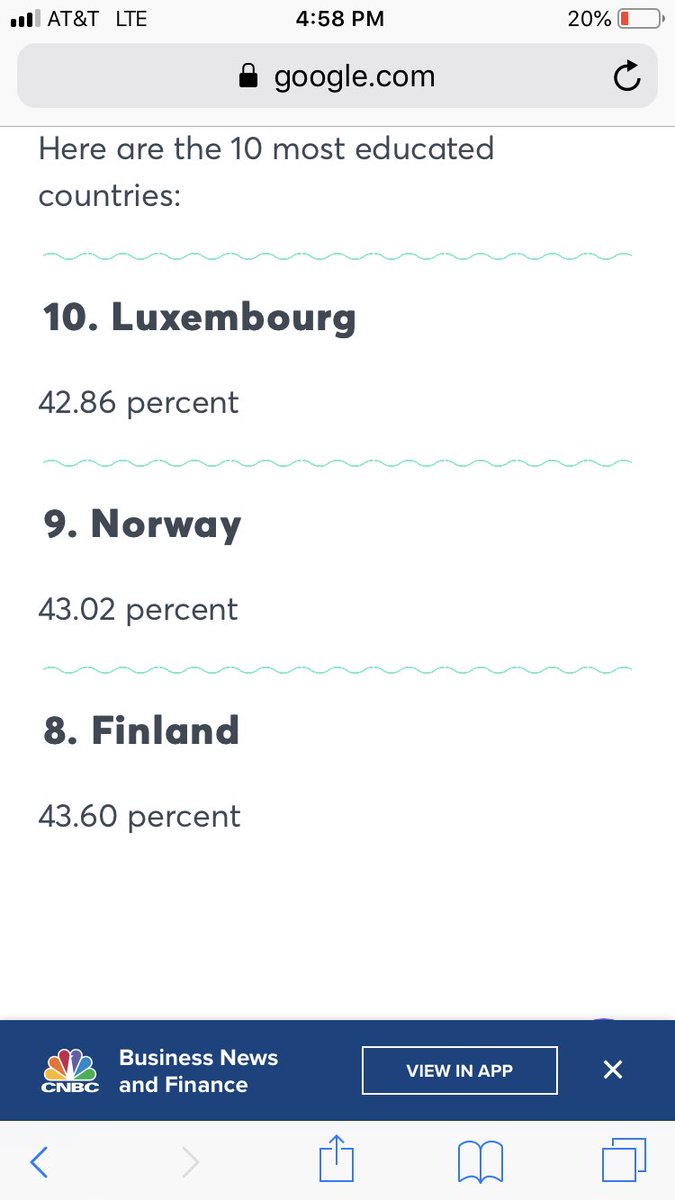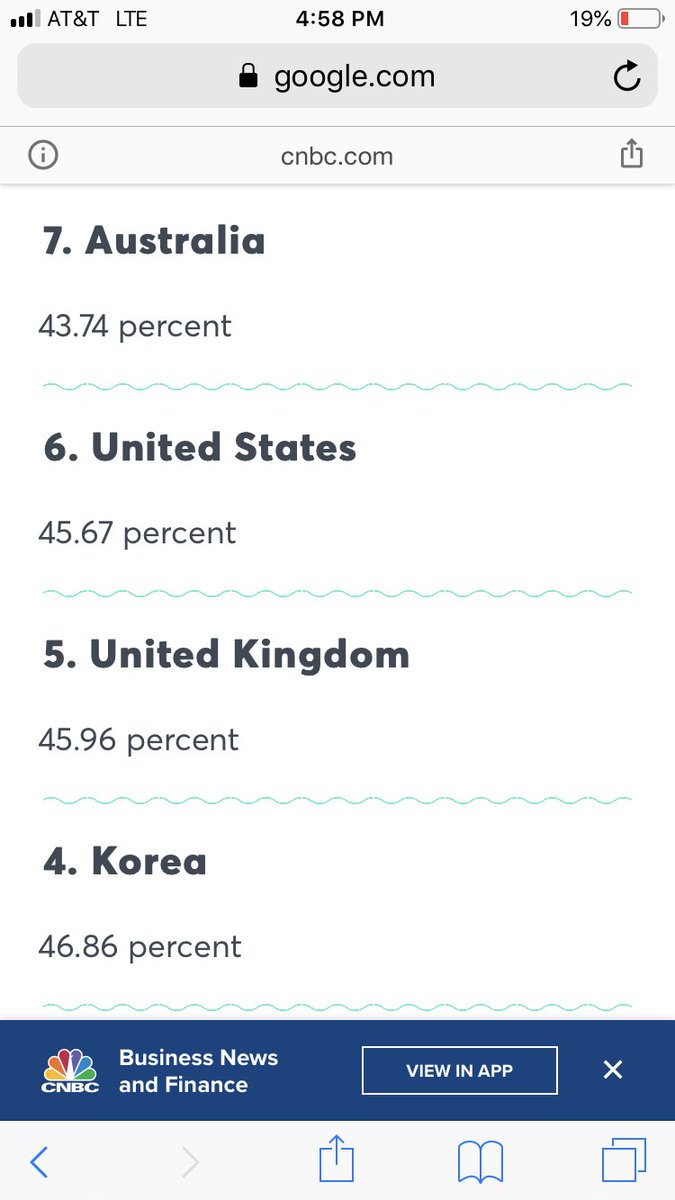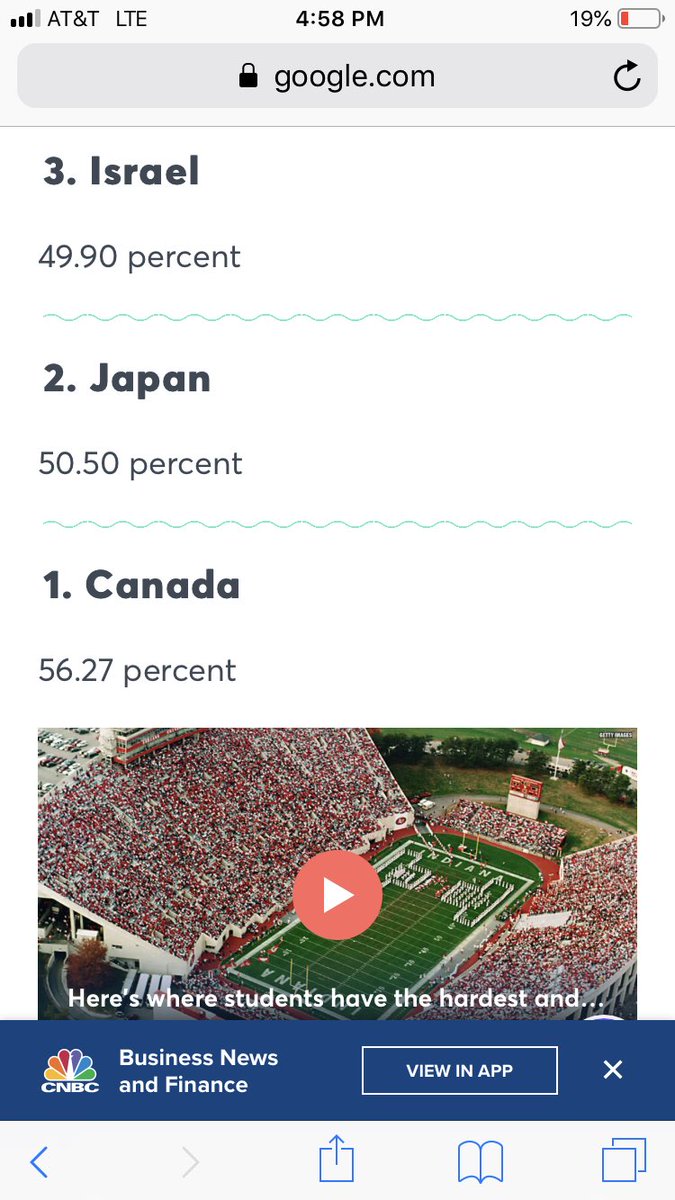Peoples analysis here is so trite—the Nordic states are incredibly pro Capital and renowned for their ‘ease of doing business’—the corporatist style & their unique role of labor unions is the result of a specific history & conditions which enable it in the present https://twitter.com/thepromulgator/status/1312682738193887233">https://twitter.com/thepromul...
—To Do this thread I am first going to go through each of the countries & discuss their relevant demographic & economic facts & their relations, then I will move to the history of corporatism & social democracy—
ALL of Scandinavian & Nordic countries—Denmark, Norway, Sweden, Finland, Iceland, Greenland, the various subsidiary territories—all share some commonalities. Most of them have independent currencies & current account surpluses, for example.
Most were historically endowed with large stocks of natural resources on the form of forests, fish, minerals, hydrocarbons, territory, & so on. Indeed, *all* of them have a unique position in shipping, fishing, & tourism, & most have one with minerals, forests, finance & fossils.
In addition, in each country, at least 70% of the population is the country’s nationality & at least 70% is the national church. Some places it’s higher. All of them have urbanization rates between 80-90%. The Islands, territories & Iceland are notable for low populations,
little urbanization (though a fair amount considering their side & population, except for Greenland). And Greenland is majority Inuit & the Faroe Íslands is majority Faroese. But with these exceptions accounted for, i can start.
1. Denmark has a prime trade & geographic position, natural gas reserves, a current account surplus for the 30 years, an independent fixed peg currency, & a massive financial services industry. It’s also much less mobile than Westerners think. It a has a unique role vis a vis EU
2. Norway’s oil industry is 20% of GDP, has massive forestry, fishing & other primary product resources, a unique shipping position, has an independent currency & is a net creditor. While it has state ownership this is due to the rents.
Now I want to move to the territories & less paradigmatic places (Greenland, Svalbard, Iceland, etc), because they actually illustrate many of the commonalities above despite their more marginal status, differences & inclusions, then I’ll return to the main ones with FNL & SWD
3. The Faroe Íslands & Greenland are independent territories of Denmark. The Åland Islands belong to Finland. Svalbard & Jan Mayen are part of Norway. What’s notable is that despite being small & marginal They’re emblematic of the unique advantages above.
The Faroe Islands, Alans Islands, Svalbard, Jan Mayen & Greenland are low population islands, some quite small, others quite huge, but they have many commonalities—fishing, shipping, & tourism, & where applicable geothermal, coal, mining & research.
While not massive, or economic juggernauts, they do help index an important aspect of the Nordic & Scandinavian countries, for their unique roles in Shipping, Tourism, & Fishing means guaranteed export revenues & foreign currency, while the minerals & energy guarantee investment.
4. For this reason, I move on to the next unique one—Iceland—often not even included in the lists. Fishing used to be 70% of its exports now its 40% & 7% of its jobs. Tourism is 10% of its economy. 85% of its energy is geothermal, & 100% renewable.
This latter fact, combined with some natural mineral resources, & its unique geographic, fishing & shipping location, guarantees the country is ironically both capable of autarky & always able to export & trade. Manufactures are 36% of exports, power intensive ones are 21%
Iceland’s most important recent development was first banking & finance—its debt was 7x its GDP, & its banking assets 11x, it was effectively the EU & US’ money launderer like Ireland. After the financial crisis this calmed down. Also, lol :
5. Now to move on to Finland, because, again, it has a unique position. Finland, like the rest has a unique geographic position, ample access to fish & transport, abundant forests & minerals, & 20% are employed in commerce & banking each
While it’s the only one with the Euro, it is similar to the other countries. It also has another unique dynamic, namely that its proximity to the USSR & now Russia gives it a geostrategic & economic unique role, & the during the Cold War Gave it a unique status.
Denmark & Norway are the most classically ‘Nordic’ countries in their corporatism & labor unions & both have them sustained by incredibly unique positions. But now to move on to Norway, Iceland & the various subsidiary territories.
6. i turn to Sweden last because, despite its paradigmatic status, I wanted to get the above out of the way. This is because Sweden, being in the center of the Scandinavian countries literally, is also economically & politically.
If we were to look at a trading map, the Scandinavian countries would all have high trade rates with each other & then, with a mix of Europe, US, Canada, Russia, China, Korea & elsewhere. But Sweden is most connected to the other ones & to the EU.
It is a member of the EU, but maintains its own currency. As such, Sweden’s unique role is more or less a subsidiary, brokering & enabling one to the rest of the Scandinavian ones—all of them have unique trade, geographic, rent & political positions but Sweden
is able to use its location, political system & ties, to inadvertently benefit from the rest of the Scandinavian countries & the EU. On top of that, Sweden has the oldest Central Bank, large resource reverses,a massive engineering,tech & manufactures center & a liberal capitalist
economy combined with social corporatism.
I am now going to send these tweets & add some quick graphs & stats before continuing.
I am now going to send these tweets & add some quick graphs & stats before continuing.
I was going to include all the demographic & economic stats but they’re easily available on Wikipedia. I was just trying to show how similar they are in population, religion, culture, geography, & so on.
—A quick aside on cultural explanations—
It is often proposed that their ‘successes’ and uniqueness come from their ‘homogeneity’, ‘culture’ and the influence of Lutheranism. Mostly this is just liberal cope or dog whistling but it does have some other effects not normally discussed.
First of all it meant they all had a shared geographic, cultural, religious & linguistic idiom & world within their countries, and secondly, it means they were easier to interact & translate between each other, despite varying linguistic differences
Third, Lutheranism & Protestantism are associated with the rise of capitalism, the ‘Protestant Ethic’, and are reflected in their savings rates, behavior, property rights, norms, & so on, all good for capital.
Fourth, in many countries the existence of a minority block, especially that is immigrants or of a different ethnic group,is often used to subvert the welfare state thru the stoking of reactionary sentiment. This is happening in the Nordic countries now, but didn’t historically
Fifth, the sad truth of the matter that is denied vehemently by the left but over interpreted by the Right is that nationalism is good for social democracy, because it creates coordinated social blocs that cooperate more easily
This is especially the case when they foster internal unity but a self definition against others or fear of threat, which is something I will bring up later relative to the World Wars & socialism.
—The Real Reasons for their Corporatist Democratic Model—
1. All of the economic variables I mentioned above—abundant mineral & other resources, primary products, & internal economic autonomy, with guaranteed access to land & sea routes & optimal trade
2. Early adopters of capitalism & its liberal form, meaning a more concentrated amount of capital & investment, stronger property rights & constant trade & investment with other European states
3. The culture & social variables I mentioned above and the ways they played roles through endogenous preferences & norms, but also for collective action
4. Early adoption of universal suffrage & mass democracy
5. Rapid industrialization & urbanization that occurred in the late 1800s & early 1900s along with the rest of Europe
5. Rapid industrialization & urbanization that occurred in the late 1800s & early 1900s along with the rest of Europe
6. Their periods of mass inequality, capital accumulation, and labor unrest were the same as everyone else’s—1800s, peaking in WWI, which is also when, mobilized in light of mass change & the war in Europe, social democracies came to power
7. Their periods of social democratic reforms, and their social democratic golden age were ALSO the same as everyone else’s—rising from post WWI to Great Depression, and lasting until about 72 before Neoliberalism Ser In
8. At the same time, a genuine proletariat & peasantry had emerged due to the urbanization, mass capital accumulation, trade position & resources, which, in light of the above, was much more organized together & en masse
9. They remained (with several exceptions ) neutral in WWI & WWII, and although were occupied, this spared them mass capital & other destruction, and it also allowed them to be intermediaries between European Allies, Americas, the Axis & the USSR
10. Quite literally the main ones are bounded on all sides by different social systems—to the West was UK, US, & Canada (Iceland between these), on 1 southern flank was Western Europe, the middle Axis Central Europe, the other Eastern Europe & on the other side the USSR
This gave them a literal trade, diplomatic, political, investment, cultural &, other advantage, as well as an opportune means to rebuild after the war. But, let’s also note that it meant they benefited from the needs of industrialization without bearing the costs.
It also meant out migration was quite easy & inflows Of Capital easy as well, but the dependence of capital on the urban locations, natural resource sites, geographic avenues & fixed energy sources, meant capital was less mobile there.
When investment flows in, countries urbanize & industrialize & thus organize, but capital cannot move, and labor can—with mass emigration in the early 1900s, the wages of labor will be bid up substantially.
And, most importantly, prior to WWII, each class was cowed into submission, not only by the above dynamics, but because having capitalist, fascist & socialist powers on each side meant each class was constrained in what they could do
Revolution could incite reaction & invasion. Reaction could incite revolution & invasion. But ignoring the workers & peasants could incite revolution—with a model right next door. Combined with its longstanding govt traditions, it’s milquetoast boring Protestant culture,
it’s models of unions, parties, government & so on, inherited from but also exported to Europe, and the fact about class constraint, forced them into their corporatist model of social peace.
In other words, they were endowed with a massive set of advantages, had longstanding institutions, had mass ties internally & to other countries & each other, they had avenues for collective action, and each class had advantages over the others, while on the outside they were
both constrained & enabled by all the systems & countries surrounding them, which endowed them with constant resource flows but also acted as a safety valve & constraint on their states & classes.
This explains their labor movement, their social democracy, their economic advantages, their high equality, and their corporatist system. Not every state can replicate these situations.
countries that can replicate these situations, to varying degrees, in fact do so in their own ways:
1. Canada
2. US
3. Australia
4. New Zealand
5. South Africa
6. Singapore
7. Korea
8. Israel
9. Japan
10. Microstate island financial hubs
11. Luxembourg
12. Switzerland
13. Monaco
1. Canada
2. US
3. Australia
4. New Zealand
5. South Africa
6. Singapore
7. Korea
8. Israel
9. Japan
10. Microstate island financial hubs
11. Luxembourg
12. Switzerland
13. Monaco
14. The UK itself
15. Taiwan
16. Hong Kong
17. To a lesser extent Malaysia, Indonesia, Macau, etc
18. Currently Rwanda is attempting something similar
19. Lebanon, Syria, Cyprus & Malta have some of these advantages & historically did use them that way
20. The Gulf States
15. Taiwan
16. Hong Kong
17. To a lesser extent Malaysia, Indonesia, Macau, etc
18. Currently Rwanda is attempting something similar
19. Lebanon, Syria, Cyprus & Malta have some of these advantages & historically did use them that way
20. The Gulf States
7 in the above categories are or have islands, 7 are peninsular, all but 3 have massive coastline access & those 3 are landlocked but between other massive powers, usually coastal & financial, to which they have massive ties.
8 are settler colonies or the ones that created them, 8 are created by and/or serve as adjuncts to and/or practice their own imperialism & colonialism locally. All 20 cluster is about 5 or 6 regions in East Asia, N America, N Europe, S Africa, the Gulf & Mediterranean.
If we add in the Nordic countries we will see they share many of these same features. Many of these are ethnically &/or religiously homogenous (or pretend or aim to be) with deep traditions of nationalism and/or state religion.
All 20 + the Nordics are some kind of:
1. Rentier state
2. Petro state
3. Financial state
4. Trade hub
5. Military base/state
6. Imperial client state
7. Broker state
8. Ethnostate
Most of them are multiple of these
1. Rentier state
2. Petro state
3. Financial state
4. Trade hub
5. Military base/state
6. Imperial client state
7. Broker state
8. Ethnostate
Most of them are multiple of these
The lessons are relatively simple—states that have some optimal resource, geographic, trade & social position, abundant resources or access, & either mobilize the populace through mass state & corporate projects or through mass dispossession & exploitation of humans & nature
end up rich, educated & relatively ‘stable’—when their projects of mass exploitation & dispossession have receded sufficiently into the past (or are so banal & tolerated as to not be noticed) they get to pretend they are utopias.
In reality, the lesson is quite simple: when it comes to states & capitalism, you don’t end up prosperous & powerful unless you:
1. Fuck over untold numbers of people or assist in the endeavor &
2. Cater to one’s own & others capitalist, military, imperial & state elites
1. Fuck over untold numbers of people or assist in the endeavor &
2. Cater to one’s own & others capitalist, military, imperial & state elites
The Nordic Model is ‘social democracy in one ethno/petro/rentier/client state’, and is not a lesson about the possibility of social democratic capitalism, ‘cultural success’, or the power of organized labor .

 Read on Twitter
Read on Twitter